How many of the original 7 Wonders still exist?

The “Seven Wonders of the World” is a term that refers to a list of remarkable structures or landmarks, compiled in antiquity. Specifically, the term refers to various man-made structures trecognized for their architectural and engineering achievements throughout human history.
How many of the original 7 Wonders still exist?
Of the original Seven Wonders of the World, only one—the Great Pyramids of Giza—still exists.
Considered the most magnificent and awe-inspiring examples of human ingenuity and skill.
Furthermore, continue to capture the imagination of people around the world.
The Great Pyramid of Giza
The Great Pyramid of Giza is the only surviving member of the original Seven Wonders of the Ancient World. Located in Egypt and built more than 4,500 years ago, during the reign of Pharaoh Khufu. Furthermore, made of limestone and granite with estimates suggesting the build lasted 20 years.
And relied on tens of thousands of workers. It stands at an impressive height of 146 meters (481 feet), making it the tallest structure in the world for over 3,800 years. For reference, the World Trade Center stands at 417 m. Constructed as a tomb for Khufu.
Let’s dig deeper into its history!
The Great Pyramid of Giza is the oldest and the largest of the three pyramids in the Giza pyramid complex in Egypt. Moreover, built over 4,500 years ago, during the reign of the Pharaoh Khufu, who was the second pharaoh of the Fourth Dynasty of Egypt. Originally known as the “Horizon of Khufu”.
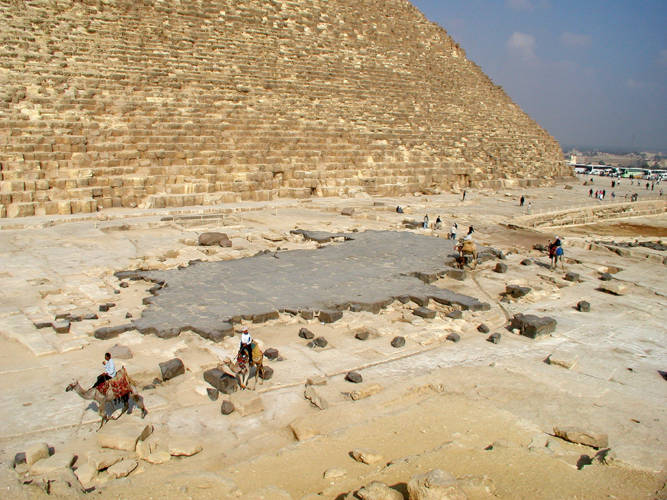
The construction of the Great Pyramid of Giza was a remarkable feat of engineering and architecture, requiring the labor of tens of thousands of workers over a period of more than 20 years. Built from millions of blocks of limestone, which were quarried from nearby sites and transported to the pyramid site using sledges and rollers. The blocks then shaped and placed into position by skilled workers, using a series of ramps and pulleys to lift the heavy stones into place.
The Great Pyramid of Giza was the tallest man-made structure in the world for over 3,800 years.
Composed of an estimated 2.3 million stone blocks, each weighing between 2 and 80 tons. The pyramid’s base is a square with sides measuring approximately 230 meters (755 feet), covering an area of more than 52,000 square meters (570,000 square feet).
The interior of the pyramid consists of a series of chambers and passages, including the King’s Chamber, the Queen’s Chamber, and a series of descending and ascending passages. The King’s Chamber is located at the center of the pyramid and contains a sarcophagus. Believed to have once held the remains of Khufu. The Queen’s Chamber is located at a lower level. And possibly intended for the burial of Khufu’s queen.
Despite the pyramid’s enormous size and complexity, engineers constructed it with incredible precision.
Moreover, with the sides of the pyramid aligned to the cardinal points of the compass. Originally covered in smooth, white limestone casing stones, highly polished and reflecting the sunlight, as a result, giving the pyramid a shimmering appearance.

Over the centuries, the Great Pyramid of Giza has been the subject of much fascination and speculation, with many theories proposed about its purpose and construction. Some have suggested that the pyramid became built by extraterrestrial beings or by a lost civilization with advanced technology. However, most scholars believe that the pyramid became constructed by human labor, using the tools and techniques available at the time.
In conclusion, the Great Pyramid of Giza remains one of the most iconic and enduring symbols of ancient Egyptian civilization, drawing millions of visitors each year who come to marvel at its grandeur and mystery. Its construction is a testament to the ingenuity and skill of the ancient Egyptians, and a reminder of the incredible feats that human beings are capable of achieving.
For further reading on the Great Pyramids: The Great Pyramids
The Hanging Gardens of Babylon
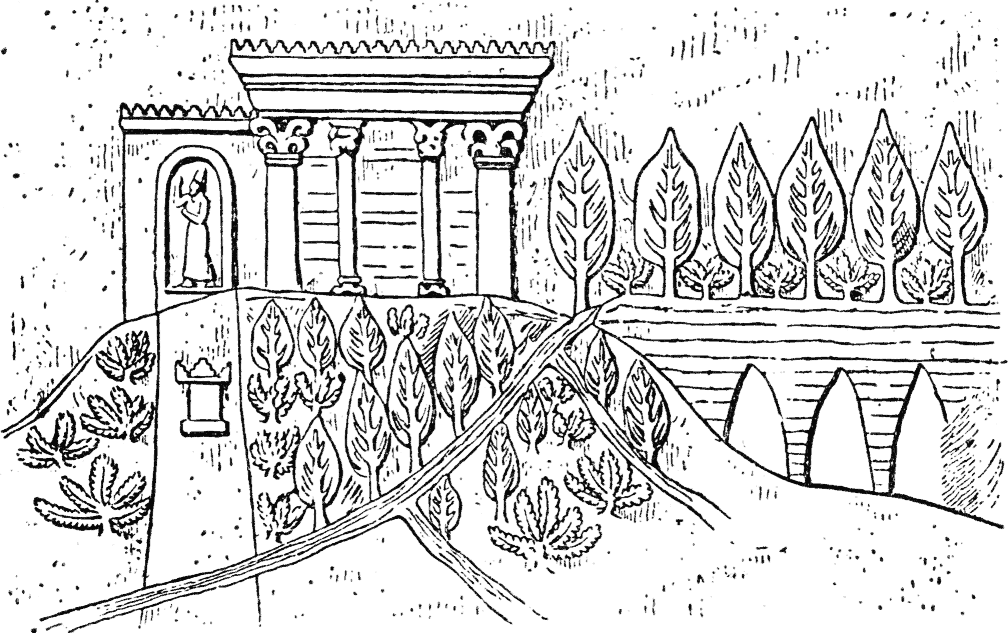
Moreover, a series of terraced gardens built in ancient Babylon, in what is now Iraq. Built by King Nebuchadnezzar II around 600 BCE. And considered one of the most impressive feats of engineering and horticulture of their time.
Designed to be a gift to Nebuchadnezzar’s wife, who missed the green hills of her homeland.
Said to have become filled with exotic plants and trees. In addition, watered by a complex system of pumps and aqueducts. Unfortunately, there are no surviving records or physical remains of the Hanging Gardens, and their exact location and appearance remain a mystery.
Considered to be one of the most magnificent and mysterious feats of ancient engineering and architecture. According to ancient sources, the gardens became constructed in Babylon. Located in present-day Iraq, during the reign of King Nebuchadnezzar II. Who ruled the Neo-Babylonian Empire from 605-562 BCE.

Designed to resemble a natural mountain landscape, with terraced gardens rising in tiers and supported by a system of arches and columns.
Built on a high platform, with the lower levels supported by massive stone columns and the upper levels supported by a system of terraces and arches. The terraces became covered with a variety of plants, including trees, shrubs, and flowers. Which stayed watered through a complex system of irrigation channels and pumps. Apparently, the water became lifted to the top of the gardens by a series of water wheels or pumps.

Despite the widespread fame of the Hanging Gardens, there is some debate among historians as to whether they actually existed. There are no surviving archaeological remains of the gardens, and there is no mention of them in contemporary Babylonian texts or inscriptions. However, several ancient sources, including the Greek historian Strabo and the Jewish historian Josephus, describe the gardens in detail, suggesting that they may have been a real and impressive feat of ancient engineering.
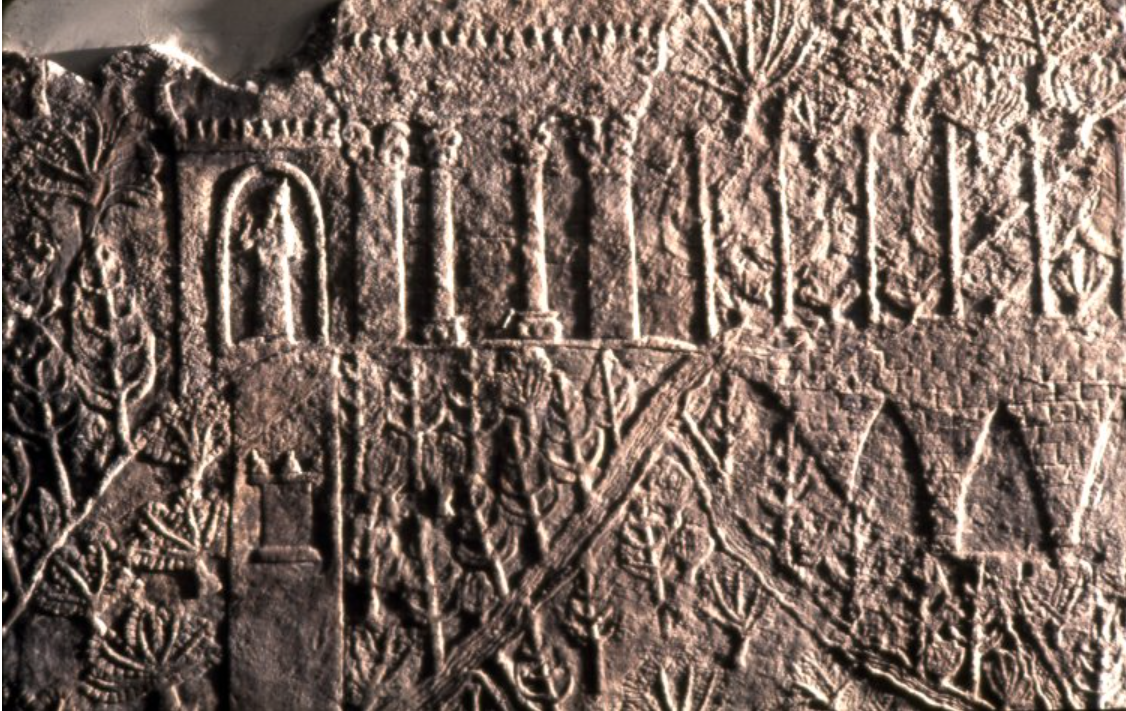
Some modern historians have suggested that the Hanging Gardens may have become built by another Babylonian ruler, or may have been located in a different city altogether. However, regardless of their true location or builder, the Hanging Gardens of Babylon remain one of the most enduring and romanticized wonders of the ancient world, a testament to the ingenuity and creativity of the ancient civilizations that built them.
The Statue of Zeus at Olympia

Quatremère de Quincy – Kansalliskirjasto. How many of the original 7 Wonders still exist?
The Statue of Zeus at Olympia was a massive statue of the god Zeus, located in the temple of Olympia, Greece.
Created by the sculptor Phidias in the 5th century BCE and considered one of the greatest works of art in the ancient world. Standing 13 meters (43 feet) tall and made of ivory and gold, it depicted Zeus seated on a throne. Holding a scepter and a statue of Nike, the goddess of victory. The statue became destroyed in the 5th century CE, and today only a few fragments remain.
Considered to be one of the most magnificent and awe-inspiring works of art in the ancient world. Located in the Temple of Zeus in Olympia, Greece, and dedicated to the king of the gods in ancient Greek mythology.
The statue was created by the sculptor Phidias.
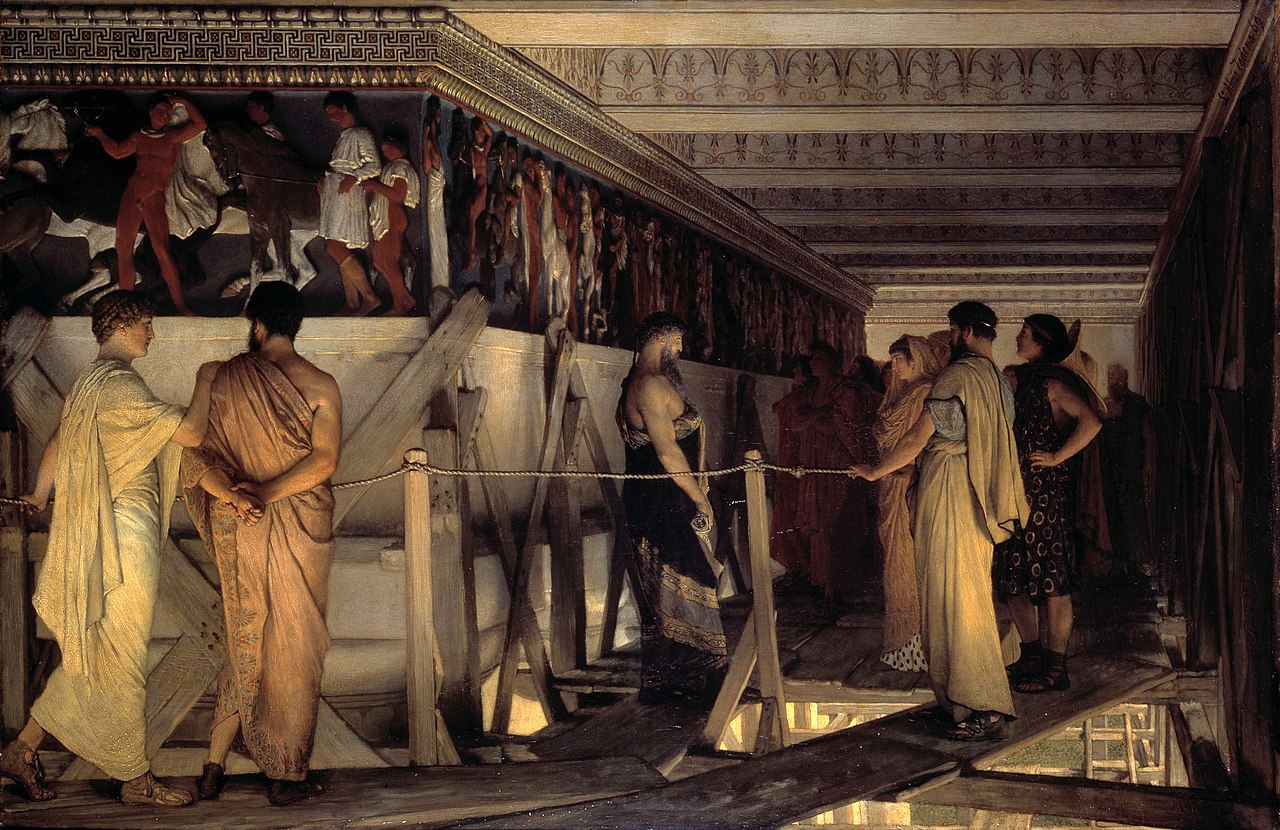
Renowned for his masterful works of art and had previously created the statue of Athena Parthenos in the Parthenon. In addition, the statue of Zeus was completed in 435 BCE, and stood over 40 feet tall, making it one of the largest and most impressive statues of the ancient world.
Made of ivory and gold, and was placed on a throne made of cedarwood and adorned with precious stones and gems. Additionally, the statue depicted Zeus seated on his throne. Moreover, holding a scepter in one hand and a small statue of Nike, the goddess of victory, in the other. Furthermore, the statue apparently was so lifelike that it appeared to breathe. Additionally, its eyes rumored to become made of precious stones that gleamed in the light.

The statue of Zeus was housed in the Temple of Zeus at Olympia, which was one of the most important religious sites in ancient Greece. The temple was constructed in the 5th century BCE and was dedicated to the worship of Zeus. The temple was decorated with elaborate carvings and sculptures, and contained a number of other shrines and sanctuaries.
Despite its grandeur and importance, the statue of Zeus was eventually lost to history.
The temple was destroyed by fire in the 5th century CE, and the statue was either destroyed in the fire or removed by invaders. Today, only a few scattered ruins and artifacts remain of the once-great temple and its magnificent statue.
Nevertheless, the Statue of Zeus at Olympia remains a powerful symbol of the rich cultural heritage and artistic achievements of the ancient world. The statue, along with the Temple of Zeus and the other wonders of the ancient world, continues to inspire wonder and awe in visitors and scholars alike, reminding us of the enduring power and beauty of human creativity and ingenuity.
The Temple of Artemis at Ephesus

The Temple of Artemis at Ephesus was a massive temple dedicated to the goddess Artemis, located in what is now Turkey. Built in the 6th century BCE and considered one of the largest and most impressive temples in the ancient world. Constructed of marble and featured 127 columns, each standing 19 meters (62 feet) tall. Destroyed and rebuilt several times throughout its history, and the final version became destroyed by a mob in 401 CE. Today, only a few scattered ruins remain of this once-great temple.
The Temple of Artemis at Ephesus was one of the Seven Wonders of the Ancient World.
And considered one of the most magnificent and important religious sites of the ancient world. The temple was located in the ancient city of Ephesus, in present-day Turkey, and was dedicated to the goddess Artemis, who was revered as the patroness of hunting, wild animals, childbirth, and fertility.

The first temple dedicated to Artemis at Ephesus was built around 800 BCE. And a simple structure made of wood and mud. Over the centuries, the temple was rebuilt and expanded several times, with each successive incarnation becoming more grandiose and impressive than the last. The final temple, which was completed in the 4th century BCE, was one of the largest and most elaborate religious structures of the ancient world, measuring 110 meters (360 feet) long by 55 meters (180 feet) wide.
Constructed using the finest materials and the most advanced engineering techniques of the time.
The temple was built on a high platform, with a series of stepped terraces leading up to the main entrance. Surrounded by a series of massive columns, which supported the roof and created an impressive colonnade around the perimeter of the building.
Inside the temple, there a large sanctuary dedicated to Artemis greeted you upon entry. Containing a statue of the goddess herself. Furthermore, said to have become made of gold and ivory. In addition, considered one of the most beautiful and valuable works of art in the ancient world. The temple also contained a number of other shrines and sanctuaries, as well as living quarters for the priests and attendants who served the temple.
Despite its grandeur and importance, the Temple of Artemis was not immune to the ravages of time!
Destroyed and rebuilt several times over the centuries, and eventually abandoned and forgotten in the centuries after the fall of the Roman Empire. Today, little remains of the once-great temple, with only a few scattered ruins and columns left standing as a testament to the greatness of the ancient world. Nevertheless, the Temple of Artemis at Ephesus remains a powerful symbol of the rich cultural heritage and religious traditions of the ancient world, and continues to inspire wonder and awe in visitors from around the world.
The Mausoleum at Halicarnassus

A massive tomb built for Mausolus and his wife Artemisia, the ruler of the ancient city of Halicarnassus.
Located in what is now Turkey. Built in the 4th century BCE and considered one of the most impressive examples of ancient architecture. Constructed of marble and featured a series of sculpted friezes depicting scenes from Mausolus’ life. Moreover, considered one of the most impressive examples of ancient Greek architecture. The structure became destroyed by earthquakes in the 14th century, but its legacy lives on in the word “mausoleum.”

Located in Halicarnassus, a city in present-day Turkey, and built in the 4th century BCE as a tomb for Mausolus, the governor of the region of Caria.
Mausolus was a powerful and wealthy ruler.
He wanted to create a monument to himself that would be both grand and lasting. He hired the best architects, sculptors, and craftsmen of the time to design and build a tomb that would reflect his power and prestige.

The construction of the Mausoleum took several years, and became completed after Mausolus’ death by his widow, Queen Artemisia. The tomb was an imposing structure, standing over 45 meters (148 feet) tall and consisting of a massive rectangular base, a stepped pyramid, and a large statue of Mausolus on horseback.
Decorated with intricate carvings and sculptures.
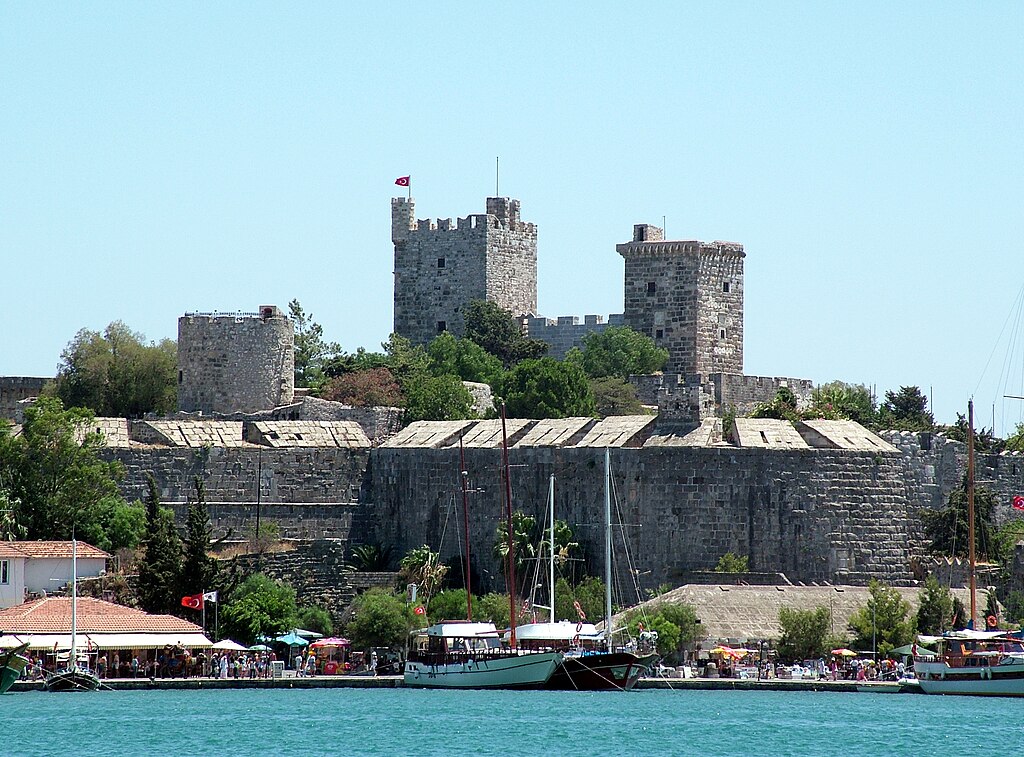
Depicting scenes from Greek mythology and the life of Mausolus himself. The sculptures became carved by some of the greatest artists of the time, including Scopas, Bryaxis, Leochares, and Timotheus.
The Mausoleum at Halicarnassus remained a popular tourist attraction for centuries, and saw apparently millions of visitors from peasants to many notable figures of the ancient world, including Alexander the Great. However, over time, the mausoleum fell into disrepair and eventually became destroyed by earthquakes in the 12th and 15th centuries CE. Today, only a few scattered ruins and artifacts remain of the once-great tomb.
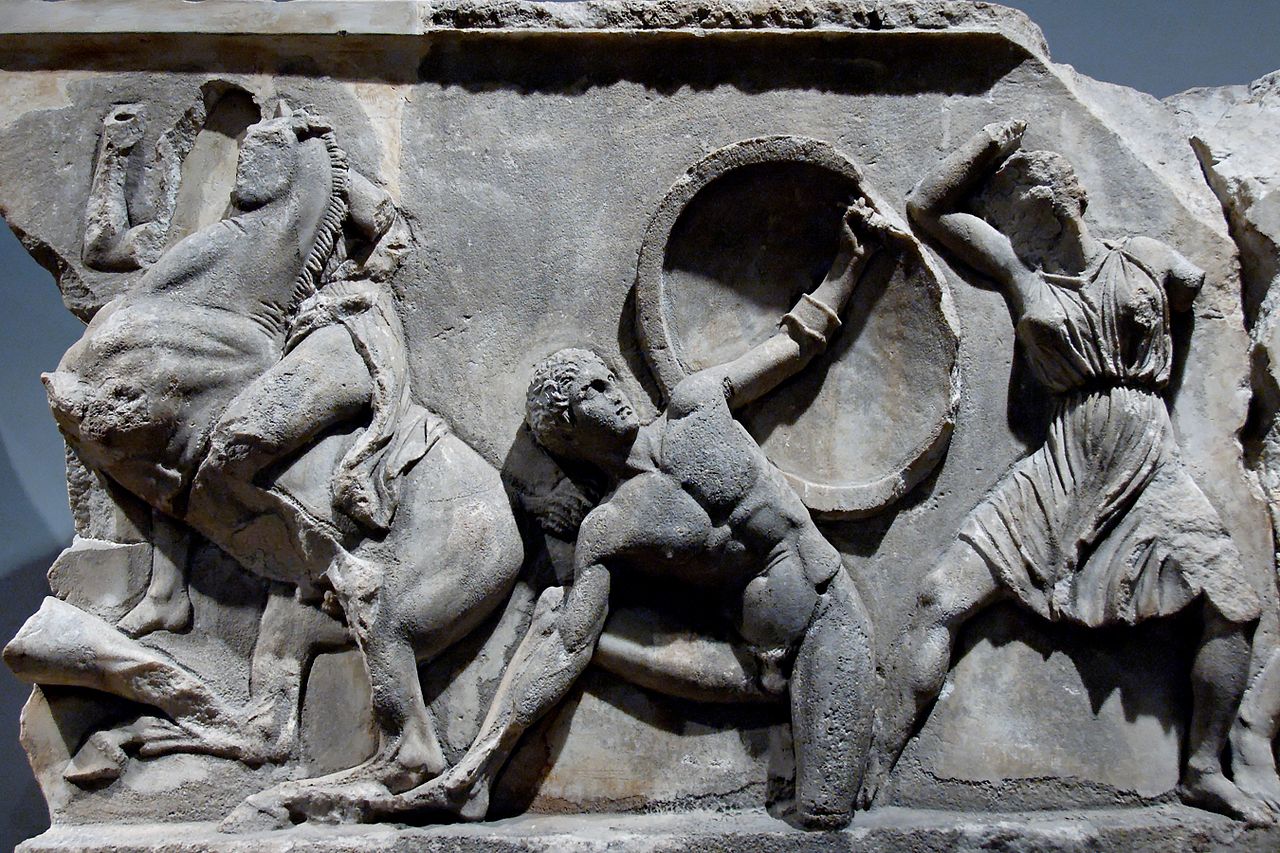
Despite its eventual destruction, the Mausoleum at Halicarnassus remains a powerful symbol of the rich cultural heritage and architectural achievements of the ancient world.

Its influence can become seen in later buildings, such as the Taj Mahal. Furthermore, the Mausoleum, along with the other wonders of the ancient world, continues to inspire wonder and awe in visitors and scholars alike, reminding us of the enduring power and beauty of human creativity and ingenuity.
Colossus of Rhodes
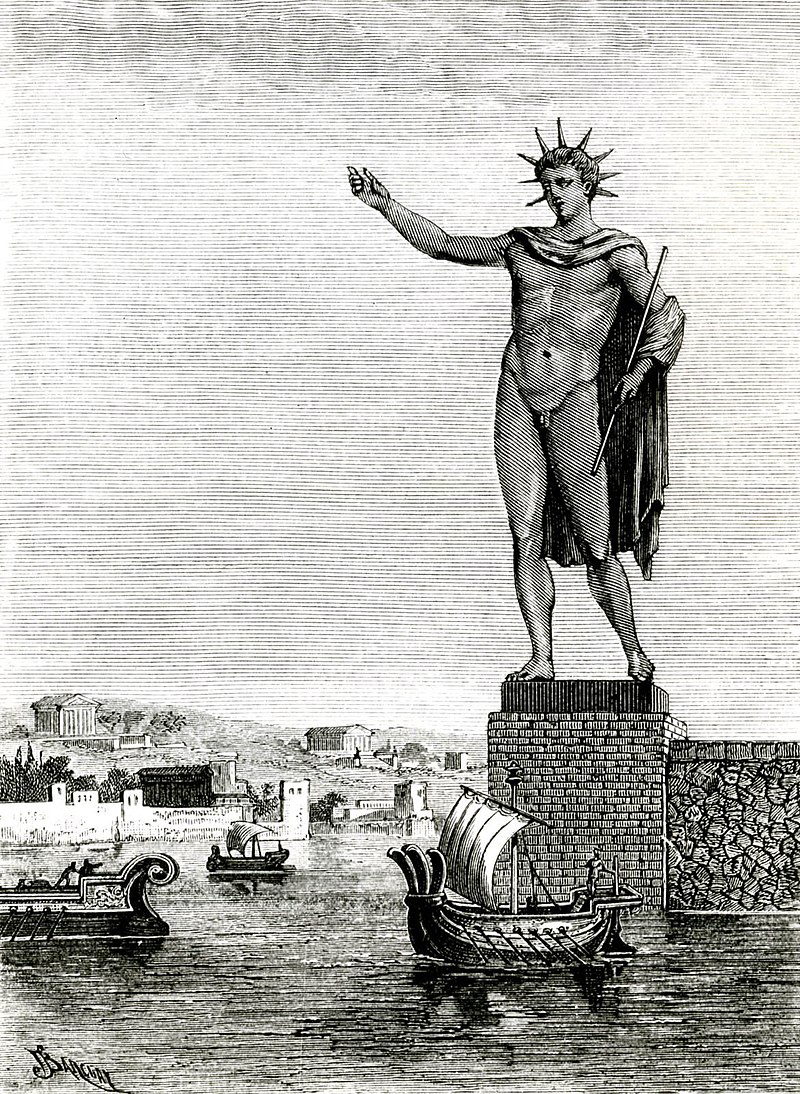
The sixth wonder was the Colossus of Rhodes, a bronze statue of the Greek god Helios that stood at the entrance to the harbor of Rhodes. The statue was over 30 meters tall and considered one of the most impressive examples of ancient Greek sculpture. However, unfortunately, the statue became destroyed by an earthquake in 226 BC.
The Colossus of Rhodes was one of the Seven Wonders of the Ancient World. And considered to be one of the most impressive and iconic statues of the ancient world. Located on the Greek island of Rhodes, and built in the 3rd century BCE to celebrate the island’s victory over the invading forces of Cyprus.
Designed by the sculptor Chares of Lindos.
And built over a period of 12 years using bronze and iron. In addition, the statue stood over 30 meters (100 feet) tall. As a result, making it one of the tallest statues of the ancient world. Furthermore, depicted the Greek god Helios. The patron god of the island of Rhodes, holding a torch in one hand and a spear in the other.

The Colossus of Rhodes was a symbol of the island’s power and prestige, and became a popular tourist attraction and a pilgrimage site for centuries. However, the statue’s existence sadly became short-lived. In 226 BCE, a massive earthquake struck Rhodes. And as a result, the statue became badly damaged and toppled over. According to some accounts, the statue lay in ruins for nearly 800 years. Before finally becoming sold as scrap metal by Arab invaders in the 7th century CE.
Despite its brief existence, the Colossus of Rhodes remains a powerful symbol of the rich cultural heritage and artistic achievements of the ancient world.
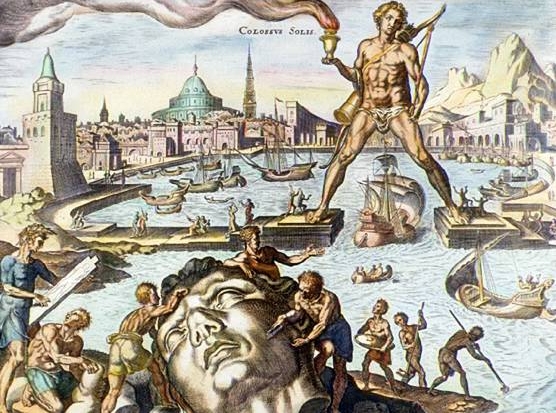
Furthermore, inspired countless works of art and literature over the centuries, and its legacy can become seen in modern-day monuments and statues around the world. The Colossus, along with the other wonders of the ancient world, continues to inspire wonder and awe in visitors and scholars alike, reminding us of the enduring power and beauty of human creativity and ingenuity.
Lighthouse of Alexandria
The last wonder was the Lighthouse of Alexandria, located in modern-day Egypt. This lighthouse was built by the Ptolemaic Kingdom in the 3rd century BC and was considered one of the tallest structures in the world at the time. It was destroyed by earthquakes in the 14th century.

Considered to be one of the most impressive feats of engineering and architecture of its time. The lighthouse was located on the island of Pharos in the harbor of Alexandria, Egypt, and was built in the 3rd century BCE during the reign of Ptolemy I.
Designed by the architect Sostratus of Cnidus!
And built over a period of several years using large blocks of white marble. The structure stood over 100 meters (330 feet) tall, making it one of the tallest structures of the ancient world, and consisted of three levels: a square base, a middle octagonal section, and a circular top section. The top section housed a massive mirror made of polished bronze that reflected sunlight during the day, and a large fire that was lit at night.
The Lighthouse of Alexandria served as a navigational aid for ships entering the harbor of Alexandria, guiding them safely to shore. It was also used as a symbol of the city’s wealth and power, and became a popular tourist attraction and pilgrimage site for centuries.
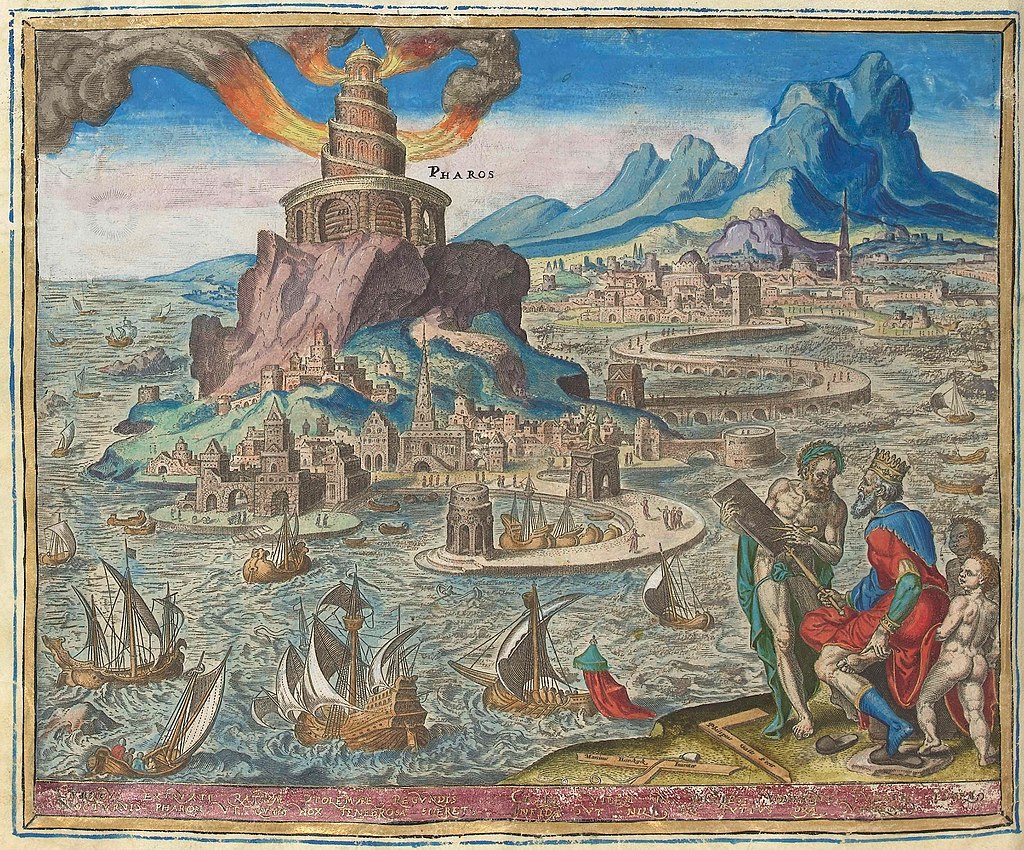
The lighthouse remained in use for over 1,500 years.
However, its eventual fate is uncertain. According to some accounts, the lighthouse became badly damaged by several earthquakes in the 14th century CE. And as a result eventually became dismantled and used as building material for a nearby fortress. However, other accounts suggest that the lighthouse remained standing until the 15th century CE. When it met its final demise becoming destroyed by invading armies.
Despite its eventual destruction, the Lighthouse of Alexandria remains a powerful symbol of the rich cultural heritage and technological achievements of the ancient world.

In conclusion, the lighthouse’s influence can become seen in later lighthouse designs. And its legacy lives on in modern-day structures such as the Pharos of Alexandria, a lighthouse built in 1480 CE that bears the same name as its ancient predecessor. The Lighthouse, along with the other wonders of the ancient world, continues to inspire wonder and awe in visitors and scholars alike, reminding us of the enduring power and beauty of human creativity and ingenuity.
In 2000, a Swiss foundation launched a campaign to choose the New Seven Wonders of the World, including modern-day structures.

Moreover, after a global voting process, the following structures became chosen:
The Great Wall of China, located in China, a series of fortifications built over 2,000 years ago to protect the Chinese Empire from invaders. For further reading: China’s Great Wall, why?
In addition, Petra, located in Jordan, a city the Nabataeans carved into rock over 2,000 years ago.
Lastly, the Colosseum, located in Rome, Italy, is an iconic amphitheater that built over 2,000


How many of the original 7 Wonders still exist?
- “Natural Wonders”. CNN. November 11, 1997, furthermore, archived from the original on July 21, 2006. Retrieved July 31, 2010. How many of the original 7 Wonders still exist?
- ^ “The multimedia campaign to choose the New 7 Wonders of the World is in its final stage”. Moreover, archived from the original on January 3, 2007. Retrieved June 10, 2015.
- ^ “Egypt’s pyramids out of seven wonders contest”. Daily News Egypt. April 20, 2007. Archived from the original on June 25, 2018, and thus retrieved June 25, 2018.
- ^ “Reuters via ABC News Australia “Opera House snubbed as new Wonders unveiled” 7 July 2007″. Australia: ABC, July 8, 2007, and thus archived from the original on June 29, 2011, retrieved July 31, 2010.
- ^ “Great Wall of China”. Encyclopædia Britannica.





